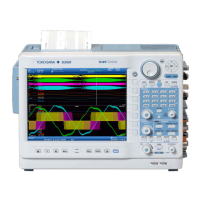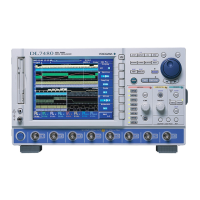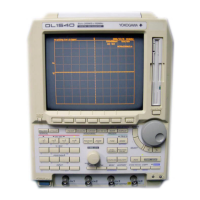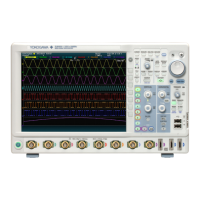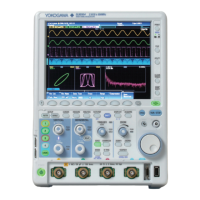10-15
IM DLM6054-01EN
Analysis and Searching
10
Configuring Delay Measurement (Delay Setup)
You can measure the delay between trace waveforms or the time difference from the trigger point to
a rising or falling edge.
The following example shows delay measurement using a risin
g edge (when Reference is set to
Edge).
: (rising edge)
: N1 (an integer between 1 and 10)
: (falling edge)
: N2 (an integer between 1 and 10)
Reference
waveform
(Reference)
Source
waveform
(Measure)
Count 1
Count N1
Count N2
Count 1
Delay between
waveforms
• Polarity
• Count
Example of reference waveform settings
Example of source waveform settings
• Polarity
• Count
Delay reference line
• The reference position for measuring the delay between waveforms changes according to the
Reference setting.
Edge The specified edge of the reference waveform is the reference point.
Trig Pos The trigger position is the reference point.
• Use the Edge Polarity setting to choose whether to detect rising or falling edges. Rising edges are
detected by default.
• Use the Count setting to specify which edge to make the refer
ence or measurement point. You can
select a value from 1 to 10. The default setting is 1.
• The measurement point is detected on the voltage of the delay
reference line.
• The voltage of the delay reference line is determined by the threshold mode as indicated below.
Auto The line is 50% of the P-P or Hi-Lo value.
Level/Hys The line is the specified threshold value.
Upper/Lower The line is (Upper – Lower)/2.
• The name of the measurement item that the delay value is displayed next to is “Dly.”
High and Low Levels (High/Low Mode)
You can select the method for determining the 100% (high) and 0% (low) levels used in the
measurement of the High, Low, Hi-Low, Rise, and Fall measurement items.
Auto
The DL6000/DLM6000 sets the high value to the high amplitude level and the low value to the low amplitude
level based on the voltage level frequency of the source waveform in the measurement time range while taking
into account the effects of ringing, spikes, etc. This method is suitable for measuring square waves and pulse
waves.
Histogram
The DL6000/DLM6000 sets the level with the highest frequency on the histogram with the highest amplitude
to high, and the level with the highest frequency on the histogram with the lowest level to low. This method is
suitable for waveforms, such as rectangular waveforms, whose highest-frequency levels have much higher
frequencies than the frequencies of other levels.
MAX-MIN
The DL6000/DLM6000 sets the high and low values to the maximum and minimum values in the measurement
time range. This method is suitable for measuring sinusoidal and saw waves. It is not suitable for waveforms
that have ringing and spikes.
Measurement Time Range (T Range1 and T Range2)
Taking the center of the waveform area to be 0 divisions, you can set the ends of the measurement
time range to values within the range of ±5 divisions in 0.01-division steps.
10.2 Automatically Measuring Waveform Parameters

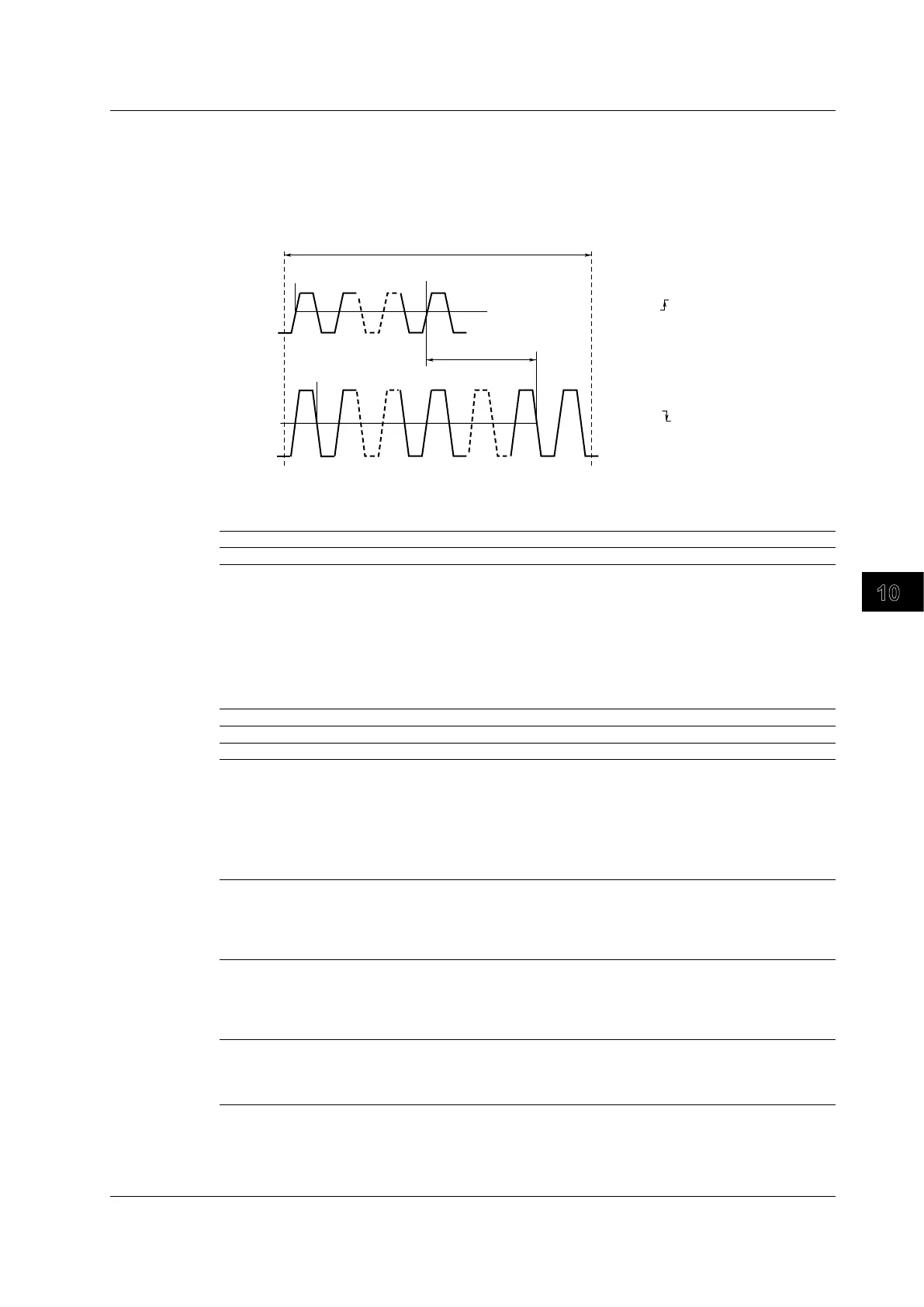